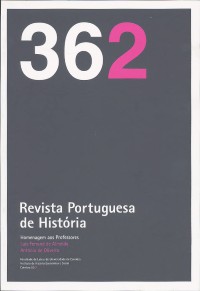Please use this identifier to cite or link to this item:
https://hdl.handle.net/10316.2/46047| DC Field | Value | Language |
|---|---|---|
| dc.contributor.author | Lucas, María Manuela | - |
| dc.date.accessioned | 2019-03-19T16:27:04Z | |
| dc.date.accessioned | 2020-10-05T05:41:51Z | - |
| dc.date.available | 2019-03-19T16:27:04Z | |
| dc.date.available | 2020-10-05T05:41:51Z | - |
| dc.date.issued | 2003 | - |
| dc.identifier.issn | 0870-4147 | - |
| dc.identifier.issn | 2183-3796 (digital) | - |
| dc.identifier.uri | https://hdl.handle.net/10316.2/46047 | - |
| dc.description.abstract | A importância do estreitamento das relações entre a História e a Literatura tem sido amplamente reconhecida nos debates científicos das últimas décadas. Daí se tem vindo a concluir que esse diálogo fecundo pode não só estimular a formulação de novas interrogações, como suscitar novos modelos de abordagem, nomeadamente quando se tenta esclarecer a problemática da identidade, perspectivada em momentos ou percursos da sua construção. Neste estudo, dedicado à formação da identidade nacional de Cabo Verde, centrou-se a atenção nos finais do séc. XIX, tendo em conta que a literatura escrita despontou no arquipélago a partir dos meados desse século e que é geralmente assinada por escritores naturais da ilhas. Interrogam-se alguns dos textos mais representativos então produzidos, sobretudo os que integram o Almanach Luso-Africano, procurando apreender o alcance das representações sociais veiculadas nesses registos e desvendar um rosto identitário para Cabo Verde. | por |
| dc.description.abstract | The importance of a closer relationship between History and Literature has been widely recognized in the scientific debates of the last decades, concluding that this creative dialogue could not only stimulate new approaches but also help to develop new thinking models, above all when we try to throw light into the set of problems concerning identity (in certain moments or in the process of its own building). In this essay, a case study about the development of national identity in Cabo Verde, a special attention was paid to the final period of the 19th century, taking into account that, in the archipelago, written literature emerged in the middle of that century and was mainly the creation of native writers. Some of the most illustrative writings are approached, above all those included in the Almanach Luso- -Africano, in order to comprehend the social representations they convey, and to unveil a distinctive identity for Cabo Verde. | eng |
| dc.language.iso | por | - |
| dc.publisher | Imprensa da Universidade de Coimbra | - |
| dc.rights | open access | - |
| dc.title | Cabo Verde: a geração de 1890 e a construção da identidade nacional | por |
| dc.type | article | - |
| uc.publication.collection | Revista Portuguesa de História nº 36 vol. 2 | - |
| uc.publication.firstPage | 283 | - |
| uc.publication.issue | 36 | - |
| uc.publication.lastPage | 302 | - |
| uc.publication.location | Coimbra | - |
| uc.publication.journalTitle | Revista Portuguesa de História | - |
| uc.publication.volume | 2 | por |
| dc.identifier.doi | 10.14195/0870-4147_36-2_17 | - |
| uc.publication.orderno | 17 | - |
| uc.publication.area | Artes e Humanidades | - |
| uc.publication.manifest | https://dl.uc.pt/json/iiif/10316.2/46047/271096/manifest?manifest=/json/iiif/10316.2/46047/271096/manifest | - |
| uc.publication.thumbnail | https://dl.uc.pt/retrieve/12204070 | - |
| item.grantfulltext | open | - |
| item.fulltext | With Fulltext | - |
| Appears in Collections: | Revista Portuguesa de História | |
Files in This Item:
| File | Description | Size | Format | |
|---|---|---|---|---|
| cabo_verde__a_geracao_de_1890.pdf | 435.82 kB | Adobe PDF |  |
Items in DSpace are protected by copyright, with all rights reserved, unless otherwise indicated.
